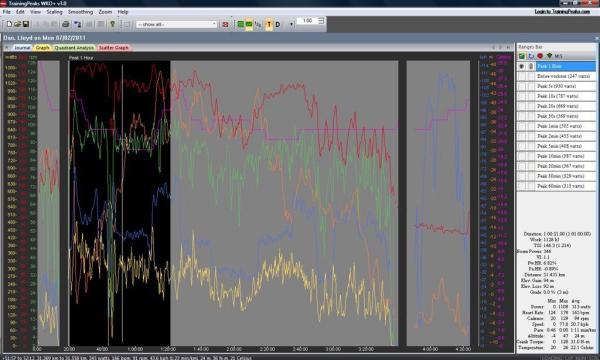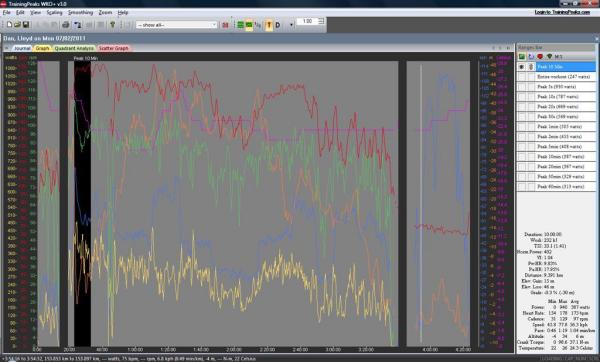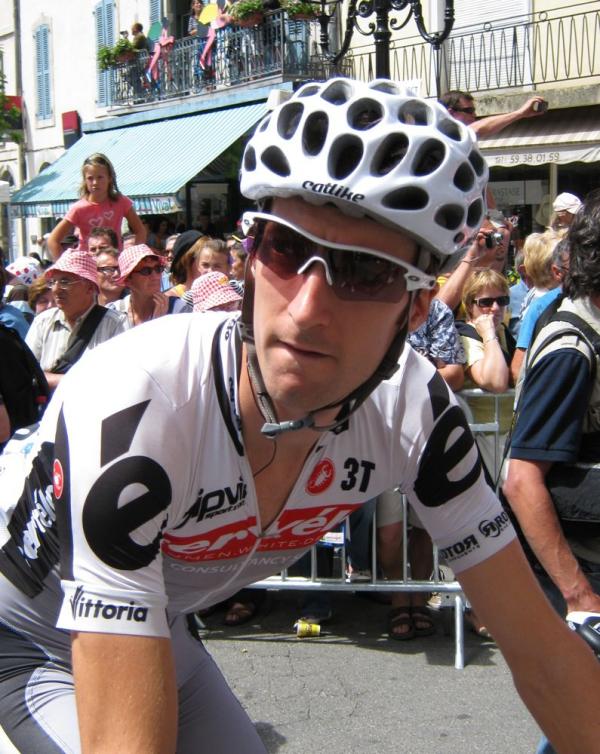Daniel Lloyd's analysis of racing: Tour of Qatar
Race analysis from Forme Coaching





Former professional cyclists Daniel Lloyd, Dan Fleeman and Stephen Gallagher will be providing expert analysis throughout the season. All three are part of the UK/Irish based Forme Coaching and will be sharing their racing experiences and race data. In this first instalment Daniel Lloyd looks at the Tour of Qatar.
Flat, hot, dusty, and very windy, the Tour of Qatar is a notorious season opener which many riders fear.
To win the race on paper is quite a simple process; make the front echelon every day and pick up more bonus seconds than the rest - but in reality, it's one of the most stressful races of the season.
The roads in Qatar are long, straight and very exposed. On the morning of each stage, team managers will assess the strength and direction of the wind, and inform the riders of exactly when they need to be in front.
Of course, chaos ensues when 125 riders all try and be in the first 10 for the corner which leads into a cross wind.
The race is normally dominated by sprinters and classics riders, both because they’re comfortable with a fair amount of fighting, pushing and shoving - but also because the power demands are suited to these riders characteristics.
The latest race content, interviews, features, reviews and expert buying guides, direct to your inbox!
My first Tour of Qatar was in 2009. The starts of pro races are normally a very relaxed affair, the riders are safe in the knowledge that nothing will happen in the neutralised zone, and they can ease themselves into racing at kilometre zero where the race officially starts. Not in Qatar!
Sitting next to Tom Boonen waiting for the whistle, he said to me "this race makes you feel like a junior again, my heart rate is 115, sitting still!"
Such is the importance of being at the front, if there’s a crosswind from the start, riders nudge forward nervously and even suddenly appear from behind team cars at the last minute to 'butt in' near the front.
Sitting on the bumper of Eddy Merckx’s directors car is like the holy grail – nobody can get in front of you, whilst all around people are jumping over kerbs, riding on the gravel, doing anything they can to be at the head of affairs.
At last year’s race, I had an average power of 390 watts for the first 10 minutes of the stage.
That isn't a steady 390 watts, more an erratic series of sprints and short efforts to stay near the front and jump back in to the front line of the echelon.
The initial effort required to make the front echelon is very anaerobic, often a power over VO2 max for two to three minutes. Once you have established yourself in an echelon, the power demands are still unpredictable.
Whilst on the television, it might look like a steady effort, in fact your are constantly changing pace to remain exactly on the wheel in front of you and out of the wind, making a small sprint when you rotate to the back in order to move to the front moving line, and pushing around 500w when you hit the wind at the front of the group.
Often, even once the echelon has been established, you can still find a few riders stuck in what we used to call 'the panic zone'.
If the wind is coming from the left, the back of the echelon will be hugging the right hand side of the road.
The panic zone is the area right at the back of the echelon, and is so called due to the fighting and scrambling of riders as they try to find a nonexistent gap into the front moving line. Inexperienced riders will often try and sit here for a while, as it's in every riders nature to shelter from the wind as long as possible, but it's not long before you find yourself in a string attached to the end of echelon.
At this point, you no longer have any shelter, and in effect you would need to put out the same amount of power as the riders at the very front of the echelon, just to keep up. This would be somewhere around 500 watts – only the likes of Cancellara, Boonen or Wiggins are able to keep that up for more than a couple of minutes.
In general, the front echelon is formed by the strongest riders in the race, and the rest of the bunch won't see them again until crossing the finish line. Once in sight of the finish, the sprinters will come to the fore, with the winner likely to have to put out in excess of 1300 watts in the final sprint to the line.
However, what 'weekend warriors' often don't realise, is that in the minutes preceding a sprint, the riders will average more than 500 watts just sitting on the wheels of the lead out trains.
The opposite end of the spectrum in this race is during head or tail wind sections. With such long straight roads, there is nothing to gain from attacking into a block headwind, and for this part of stages most amateurs would be able to comfortable sit in the peloton.